All about the evening primrose
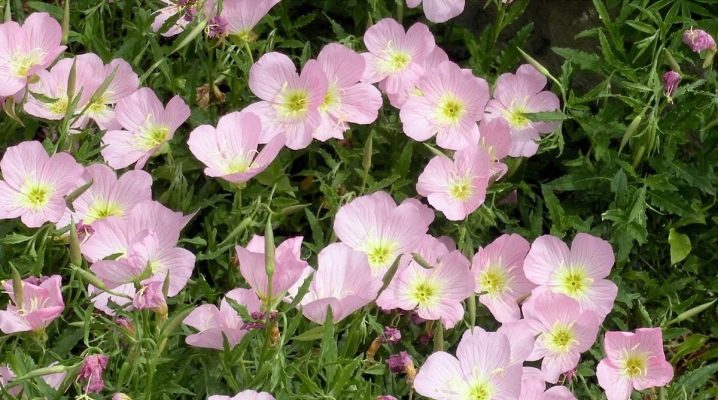
Pink evening primrose is a rather unpretentious and beautiful plant, which is most often planted in garden areas. Due to its original appearance, easy care and rapid reproduction, perennials are highly popular among gardeners.

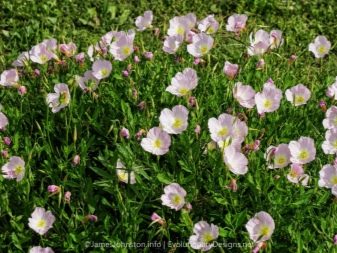
Varieties
The numerous evening primrose family includes more than 140 biennial, annual and perennial varieties. Almost all varieties are distinguished by good aromatic properties and pronounced color shades. Suitable for growing in cold regions. Consider the most popular varieties of pink evening primrose.
- Shrub... North American variety 90-120 cm high. It has lanceolate leaves and large yellow flowers. From the shoots, convenient sockets for dividing are obtained, using which the plant can be quickly propagated. An unpretentious variety of evening primrose.
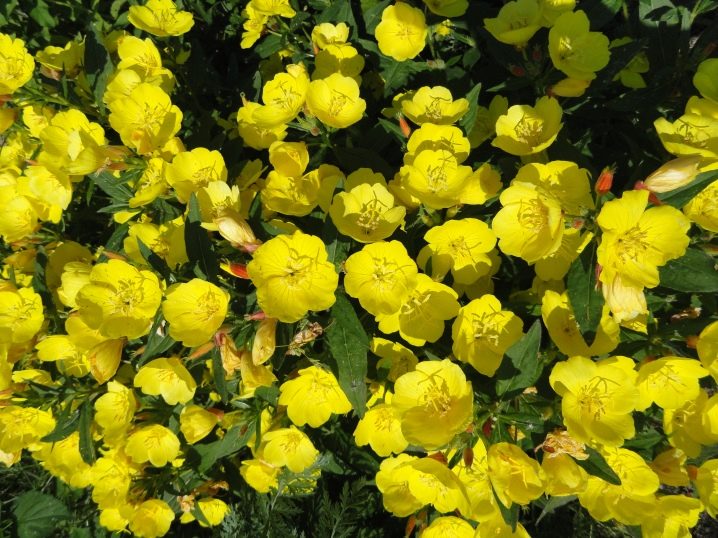
- Quadrangular... Depending on external conditions, the variety reaches a height of 50-70 cm. Differs in easy cultivation and beautiful flowering from June to August. It multiplies easily by self-seeding and dividing the bush.
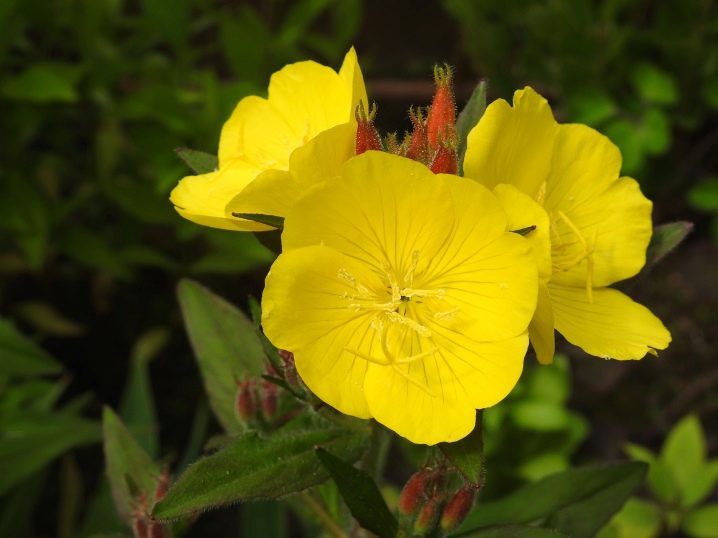
- Orchid pink... The height of the variety varies from 50 to 80 cm. The peculiarity of the variety is fragrant inflorescences of a pale pinkish hue. The leaves are oblong, the shoots are flexible. Growing in winter-hardy regions requires the installation of additional shelter or cultivation in special containers.
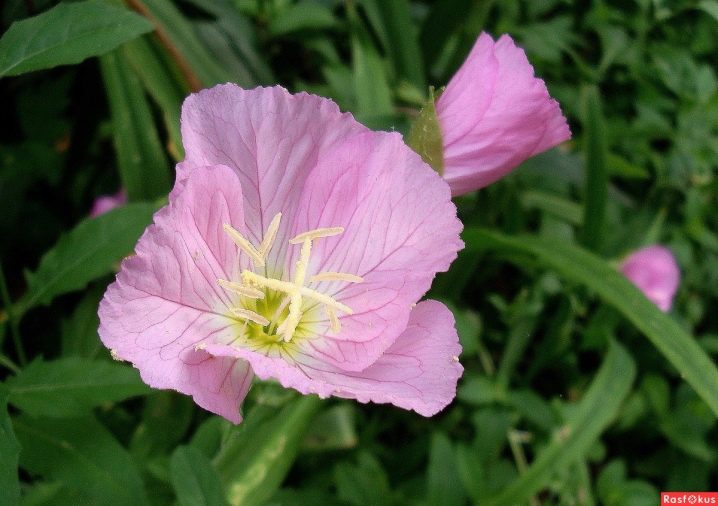
- Missouri... It is characterized by creeping shoots with a height of 15 to 20 cm. It has rather large flowers with a diameter of several centimeters. Flowers bloom from early June to late summer. A hardy and perennial variety, often used to create alpine slides and rocky gardens.
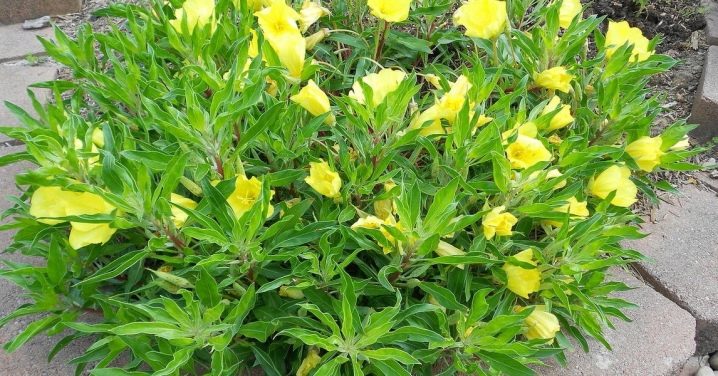
In addition to the above varieties, the evening primrose subspecies is no less popular. "Dream". The variety is distinguished by long flowering, stems from 25 to 40 cm in height and an oblong, slightly pointed leaf shape. Depending on the growing conditions, the shade of the buds is white or pinkish.
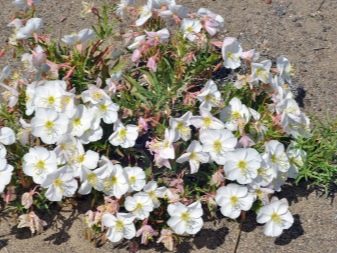
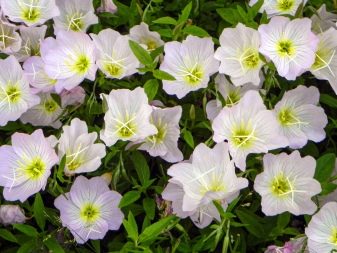
Growing conditions
Evening primrose plants are perennials with no strict growing requirements.... Most popular varieties germinate well both in partial shade and under the influence of direct sunlight. The soil for the plants should be sufficiently drained and light. Experts recommend using a nutritious and fresh soil with a neutral chemical composition.
In order for evening primrose to develop and bloom successfully, it is necessary to carefully fertilize the topsoil. For this, 3-4 kg of humus are used per 1 sq. m with the addition of any mineral fertilizer. The day before planting, the soil is carefully dug up and watered abundantly.
A prerequisite for planting and care is planting evening primrose in separate holes. After that, the plant is watered daily and, if necessary, shaded.
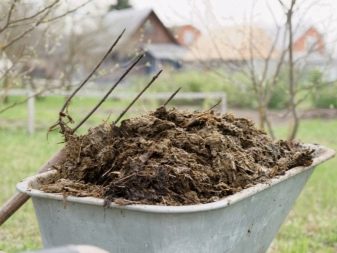
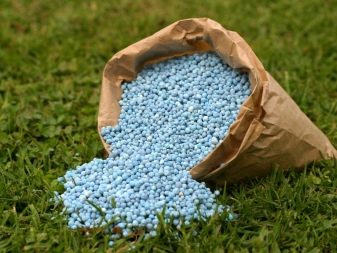
Despite the fact that faded stems do not in any way affect the duration of flowering itself, it is recommended to remove fading areas. Full pruning and shaping is done every fall. Young crops should be mulched and weeded in a timely manner. Otherwise, evening primrose will often suffer from weeds. Experts also recommend from time to time to loosen the upper layers of the soil and tie the initial shoots. This allows for good compactness and stability.
Most varieties of evening primrose are frost-resistant, therefore they do not need to use a dense shelter. After the above-ground part has been removed, mulching is performed. Compost or peat is used to protect the flower. It is recommended to cover young shoots with coniferous spruce branches or dried leaves.
In order to avoid rapid wilting and degeneration, it is necessary to ensure that evening primrose does not grow too quickly. In the presence of the first signs indicating a deterioration in flowering, the bushes must be divided and transferred to a new place. This procedure should be done every 4-5 years.
To speed up the germination of new planting material, containers can be covered with plastic or durable glass. It is recommended to moisten the soil from a special spray bottle.
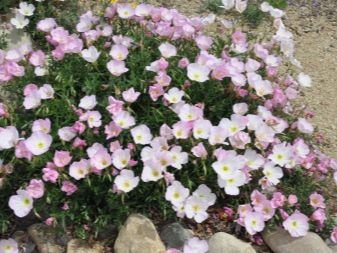

Reproduction methods
The culture reproduces well both with the help of seeds and by the vegetative method.... Young shoots are effectively used as independent plants. Bushes that are too large are usually separated in early September and late May.
Seeds are planted in the soil in May, and if a greenhouse is used, then in early April. Seed material deepens into the ground by 5-10 cm, depending on the chemical composition and characteristics. When growing any variety of evening primrose, maintain good humidity. Dedicated devices and visual analysis are used to effectively measure moisture.


In order for the plant to germinate quickly and have a beautiful flowering, it must be transplanted into garden soil in early or mid-May. It is necessary to adhere to the distance between the bushes in the range of 50-70 cm. Otherwise, the root system will not have time to ripen, which will entail various unpleasant consequences.
By dividing the bush, evening primrose reproduces in the autumn or spring. To do this, you should dig out individual shoots and divide them into several divisions. A similar method can also effectively rejuvenate the culture. In addition to reproduction by bush and seeds, perennials are excellently grown with the help of so-called babies. Small shoots are usually seen near the main root system.
A distinctive feature of evening primrose is the almost complete lack of susceptibility to diseases. At the same time, it is especially important to carry out preventive work in a timely manner, fertilize new shoots, water abundantly during the entire growth period and prepare for wintering.
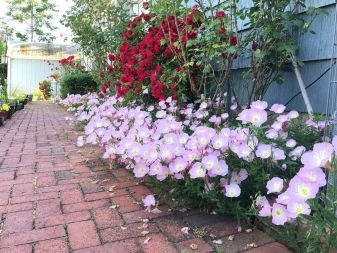
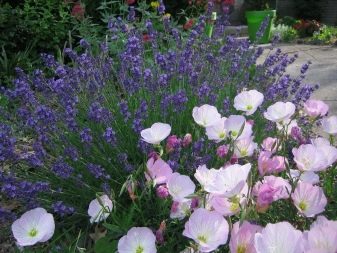

































































































The comment was sent successfully.